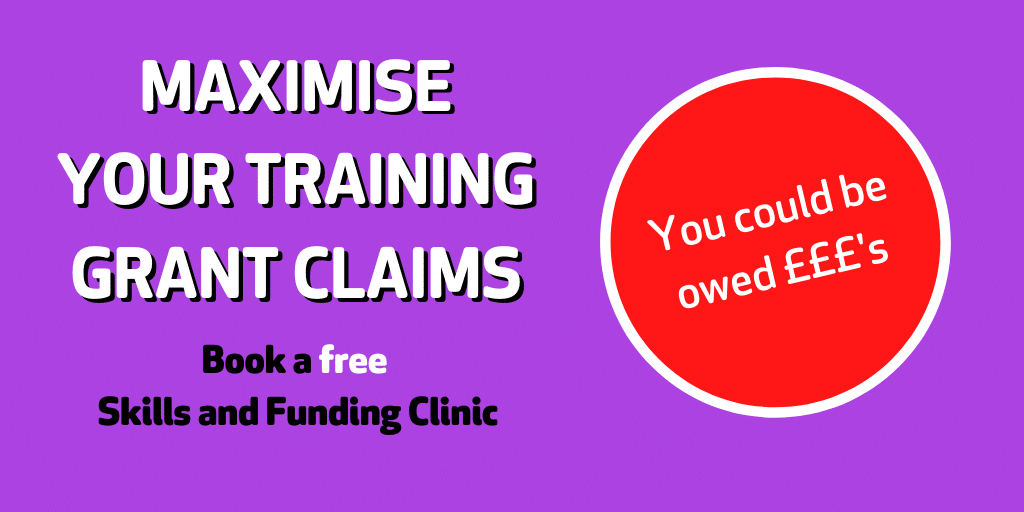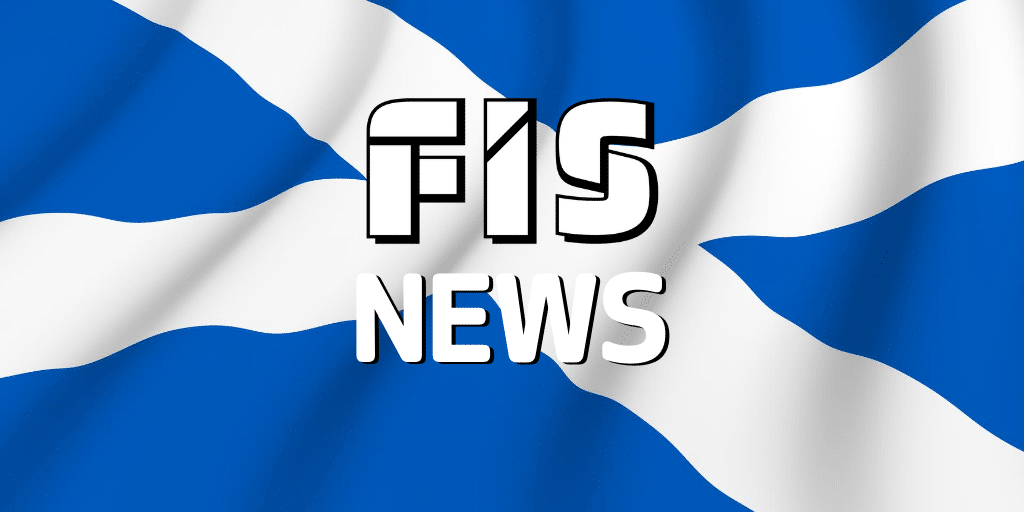
by Iain McIlwee | 14 Aug, 2020 | Main News Feed
The Northern Ireland Protocol will take effect from 1 January 2021. New guidance provides support for businesses engaging in new processes under the Northern Ireland Protocol. The guidance outlines that, under the Northern Ireland Protocol, the UK Government will ensure that:
- Moving goods from Northern Ireland to Great Britain should take place as it does now – there will be no additional process, paperwork, or restrictions on Northern Ireland goods moving to Great Britain, delivering unfettered access.
- Changes for goods moving from Great Britain to Northern Ireland will be kept to an absolute minimum – with a new Trader Support Service, available to all traders at no cost, to be established to provide wraparound support, alongside guidance on the processes for food and agricultural products designed to uphold the longstanding status of the island of Ireland as a single epidemiological unit.
- Trade in goods between Northern Ireland and Ireland, and between Northern Ireland and EU Member States, will continue unaffected, with no change at the border, no new paperwork, and no tariffs or regulatory checks.
- For trade with the rest of the world, Northern Ireland will benefit from UK FTAs – ensuring the benefits of those agreements are felt right across the United Kingdom.
If businesses are impacted by these changes, they may want to consider the Trader Support Service. It can help businesses if they:
- move goods between Great Britain and Northern Ireland, or bring goods into Northern Ireland from outside the UK;
- act on behalf of someone to move goods between Great Britain and Northern Ireland, or bring goods into Northern Ireland from outside the UK;
- are based in Northern Ireland and receive goods from outside of Northern Ireland;
- send parcels between Great Britain and Northern Ireland, or bring parcels into Northern Ireland from outside the UK, using Royal Mail or an express operator.
The Trader Support Service will be free to use and will guide businesses through any changes to the way goods move between Great Britain and Northern Ireland, and into Northern Ireland from outside the UK. Businesses can also use it to get declarations completed on their behalf. Businesses can register an interest in the Trader Support Service here.
Apply for grants if your business completes customs declarations
Businesses can apply for 3 grants to help their business complete customs declarations. They can apply to get funding for:
- training that helps a business to complete customs declarations and processes;
- hiring new staff to help their business complete customs declarations;
- IT improvements to help their business complete customs declarations more efficiently.
More information on the scheme and how to apply is available here.

by Iain McIlwee | 14 Aug, 2020 | Main News Feed
The FIS Training Group has secured funding to supplement the cost of training courses completed by FIS employer members. This FIS Supplement is in addition to the CITB GET code grant you claim from CITB for short duration courses. Organisations are eligible for this FIS Supplement if the training undertaken is not on their CITB Skills and Training Fund Plan.
FIS Skills and Training Lead, George Swann, states “This is good news for the training group and our community as it enables members to access additional funding of up to £1,000 to cover a wide array of training, from generic health and safety through to specialist courses such as spray plastering, deflection heads or fire door inspection. If you wish to make use of this supplementary funding we advise you to get in touch with FIS asap as it is a limited pot.”
Application for this supplementary funding is straightforward and will be based on quarterly caps. It will be administered on a first come first served basis. To claim an applicant will simply need to send your invoice to info@thefis.org or telephone 0121 707 0077, FIS will review in line with availability and the set CITB criteria. If the claim meets the requirements of the supplement and the cap has not been reached we will arrange a refund of 50% of the course costs up to a maximum value of £250 per delegate, £1,000 per company per year, less the Tier GET code grant claimed from CITB.
See the full terms and conditions below.
For a full list of the CITB Training Standards please see: CITB training standards
CITB GET Fund FIS Supplement Terms and Conditions:
- An FIS supplement can only be paid to organisations ‘in scope’ to CITB and up to date with levy payments.
- The supplement is primarily for micro and small organisations no more than 25% of the total fund can be paid to large organisations (100 or more employees).
- Non Grant Eligible training is not covered by this supplement.
- The supplement cannot be used for Grant Eligible training that is already included on an individual employer contracted CITB Skills and Training allocation.
- Training must have taken place between 01 August 2020 and 31 March 2021 and have been completed before applying.
- Training must have been completed by delegates who are currently employed by or are NET (taxed) Construction Industry Scheme (CIS) sub-contractors of CITB registered employers.
- Invoices supplied must show the full costs of the training which have been carried out including CITB registration number, Training Provider, course name, CITB GET code, Tier value, date of completion, number of delegates, course cost and VAT.
- Successful applications will be notified within 25 working days.
- Payments will be made in the first week of October 2020, first week of December 2020 and first week of March 2021.
Funding is limited so cannot be guaranteed.
FIS are currently surveying members to identify the GET Code training courses in most demand. If your organisation uses CITB short duration courses, please complete this survey
FIS is happy to review and support all of your funding claims through our one to one Skills and Funding Clinics (remember at this time you can still claim CITB Grants for courses undertaken completed in 2019 up until end November 2020 – our Skills clinics will help you to identify and process these claims). This is a service freely available to members through the booking form here. Members are also strongly advised to apply for the CITB Skills and Training Fund 2020 which can allow organisations to claim up to £25,000 to support their training needs.

by Iain McIlwee | 14 Aug, 2020 | Main News Feed
In response to coronavirus, the use of face coverings has become mandatory in more public places, and construction employers have asked the CLC for guidance to help provide a consistent approach across the industry. In The Use of Face Coverings in Construction during Coronavirus (COVID-19), it is proposed that employers make available face coverings as a minimum where workers are not required to wear RPE for their specific task and their workplace meets all of the following criteria:
- an enclosed space
- where social distancing isn’t always possible
- where they come into contact with others they do not normally meet.
The full guidance reads:
The Use of Face Coverings in Construction during Coronavirus (COVID-19)
Construction employers have asked the CLC for guidance on the use of face coverings in response to coronavirus to help provide a consistent approach across the industry.
Definitions
Face coverings are made from fabric or cloth and cover the mouth and nose to protect others, not the user, from infection. They are not PPE as they do not protect people from work-related hazards and are not made to a recognised standard.
Surgical face masks are designed and manufactured to be used in medical settings to limit the spread of infection and they are resistant to droplets of fluids and splashes. Whilst they are made to a recognised standard, they are not considered to be PPE.
Visors are classed as PPE and are usually worn to protect the face and eyes. They protect users, not others, against droplets carrying infection.
Respirators which are used extensively in construction activities, are classed as PPE and protect people from work-related hazards that cannot be eliminated or reduced in any other way. They should be specific to the hazard identified and provided free of charge by employers.
Current Position
The use of face coverings in response to coronavirus is mandatory for members of the public in an increasing number of specified places, most of which meet all of the following criteria:
- enclosed public spaces
- where social distancing isn’t always possible
- where people come into contact with others they do not normally meet
The use of face coverings or PPE is not required in response to coronavirus in offices or whilst carrying out construction activities and the Government guidance on Working safely during coronavirus (COVID-19) – Construction and other outdoor work states that: Workplaces should not encourage the precautionary use of extra PPE to protect against COVID-19 outside clinical settings or when responding to a suspected or confirmed case of COVID-19.
CLC Position
Where construction workers are not required to wear PPE for their specific task and their workplace meets all of the criteria below, their employer should make available, as a minimum, face coverings:
- an enclosed space
- where social distancing isn’t always possible
- where they come into contact with others they do not normally meet
Current Social Distancing Requirements
Workers should maintain a distance of two metres, or one metre with risk mitigation where two metres is not viable.
You can download this advice on the use of face coverings in construction as a pdf for circulation here.
Specific additional guidance on Personal Protective Equipment (PPE)/Respiritory Protective Equipment (RPE) from the FIS
This new announcement from the CLC has not required any change to FIS Guidance already issued. This will continue to be reviewed against official advice and new information available.
FIS COVID-19 Guide to the Selection of Personal and Respiratory Protective Equipment
With PPE / RPE in short supply and a variety of often conflicting information and advice, FIS has produced this guide to help companies to select the right PPE and manage common construction hazardous substances e.g. dust in an environment with the added complexities of protection against COVID-19.
PPE Certificate Checklist
Are you sure that your personal protective equipment (PPE) is legal and its CE compliance certificate is genuine and relates directly to the performance of the equipment?
Guidance on managing applying PPE
As well as issuing PPE it is vital that we ensure people know how to put it on, remove it, clean it or dispose of it to ensure that we eliminate all risks.
You can access the FIS COVID H&S Toolkit here.

by Oscar Venus | 13 Aug, 2020 | Main News Feed
This policy note reiterates Scottish Government policy on the inclusion of subcontractors in a Project Bank Account (PBA); and reinforces it in practice through a notice to subcontractors.
Project Bank Accounts: availability and accessibility to subcontractors – CPN 7/2020
Purpose
1. This Construction Policy Note reiterates Scottish Government policy on the inclusion of subcontractors in a Project Bank Account (PBA); and reinforces it in practice through a notice to subcontractors.
Key message
2. Information must be available to and accessible by subcontractors to enable them to join a PBA.
Timing and coverage
3. This CPN applies with immediate effect and covers all current and future contracts containing PBA provisions.
Target audience
4. This note is intended for all relevant staff:
- in public bodies to which PBA policy applies (section 1 and 7-11)
- in all other bodies that can award public contracts to which a PBA could be applied
- in other organisations providing procurement routes for the construction of public buildings and infrastructure
Introduction
5. PBAs assure two things for subcontractors working on Scottish construction projects delivering built assets to the public sector:
- prompt payment
- protection of payment from the effects of main contractor insolvency
6. The former is good for businesses and their employees. The additional assurance PBAs give on the latter also make them good for the economy and society. It follows therefore that where a PBA is implemented it must be available to and accessible by subcontractors.
Guidance
7. Commissioning bodies can both facilitate and expedite subcontractors’ requests to join the PBA by ensuing that the main contractor receives and conveys a note of the information and associated guidance set out herewith at annex A. This annex shall henceforth be incorporated as appendix I – 1 of Scottish Government’s PBA guidance document.
Dissemination
8. Please bring this CPN to the attention of all those staff involved in the procurement of relevant construction projects.

by Oscar Venus | 12 Aug, 2020 | Main News Feed
Government brings in law to ensure furloughed employees receive statutory redundancy pay based on their normal wages, rather than a reduced furlough rate.
- New law will ensure that furloughed employees receive statutory redundancy pay based on their normal wages, rather than a reduced furlough rate
- changes will mean those furloughed under the Coronavirus Job Retention Scheme are not short-changed if they are made redundant
- the changes will also apply to statutory notice pay and other entitlements, providing some reassurance during this difficult time
Furloughed employees who are then made redundant will receive redundancy pay based on their normal wage, under new laws being brought in today (Thursday 30 July).
Throughout the pandemic, the government has urged businesses to do right by their employees and pay those being made redundant based on their normal wage, rather than their furlough pay, which is often less.
The majority of businesses have done so, however, there are a minority who have not.
Today the government will bring in legislation to protect workers and ensure all furloughed employees who are being made redundant receive their full entitlement.
Employees with more than 2 years’ continuous service who are made redundant are usually entitled to a statutory redundancy payment that is based on length of service, age and pay, up to a statutory maximum.
This legislation, which will come into force from tomorrow (Friday 31 July), will ensure that employees who are furloughed receive statutory redundancy pay based on their normal wages, rather than a reduced furlough rate.
Business Secretary Alok Sharma said:
The government is doing everything it can to protect people’s incomes through our Coronavirus Job Retention Scheme, which is now supporting over 9 million jobs across the UK.
We urge employers to do everything they can to avoid making redundancies, but where this is unavoidable it is important that employees receive the payments they are rightly entitled to.
New laws coming into force today will ensure furloughed workers are not short-changed if they are ever made redundant – providing some reassurance for workers and their families during this challenging time.
These changes will also apply to Statutory Notice Pay, which is where employees must be given a notice period before their employment ends, varying from at least one week’s notice up to 12 weeks’ notice, depending on how long they have worked for their employer. During this notice period, employees must be paid.
This legislation will also ensure that notice pay is based on normal wages rather than their wages under the CJRS.
Other changes coming into force will ensure basic awards for unfair dismissal cases are based on full pay rather than wages under the CJRS.
In March, the government established an unprecedented package of support for companies of all sizes across sectors, to protect businesses, jobs and incomes during the pandemic.
Through the Coronavirus Business Interruption Loan Scheme, the Coronavirus Large Business Interruption Loan Scheme and the Bounce Back Loan Scheme, more than one million loans have been approved.
We have also introduced a new Job Retention Bonus to encourage firms to keep on furloughed workers, with a one-off payment of £1,000 being provided to UK employers for every furloughed employee who remains continuously employed through to the end of January 2021.
Notes to editors
- an employee will be entitled to statutory redundancy pay if they have been working for their employer for 2 years or more
- the new legislation will ensure that pay received in relation to statutory redundancy pay is calculated based on an employee’s normal pay, rather than furlough pay (potentially 80% of their normal wage)
- calculating statutory redundancy pay for employees relies on inputting average weekly pay, alongside other factors such as length of continuous service and the employee’s age. Average weekly pay is usually worked out by adding the pay received over the 12 weeks up to when the employer notifies the employee they are being made redundant, and dividing by 12 to get the average. This legislation ensures that employers must treat any weeks an employer spent on furlough over the 12-week reference period as if they were working, and on full (100%) pay
- this legislation does not impact any enhanced redundancy pay that may be stipulated in the terms and conditions of an employee’s individual employment contract, but applies to basic statutory redundancy pay entitlements
- the legislation also covers other employment rights that rely on average weekly pay, including notice pay, unfair dismissal, and short-time working

by Clair Mooney | 3 Aug, 2020 | Main News Feed
The latest CPA Construction Industry Scenarios (Summer 2020) have now been published which has three scenarios in a similar vein to the Spring Scenarios. In the CPA’s main construction scenario, a V-shape better described as a tick-shape recession and recovery, construction output is anticipated to fall by 20.6% during 2020 before recovery in 2021 during which construction output rises by 18.0% from a low base.
Overall, during the two years 2020 and 2021, the main scenario is similar to the CPA’s Spring main scenario. However, there has been a change in the monthly profile of activity that has led to an upward revision to construction output during 2020 and a downward revision to construction output in 2021.
Since the CPA’s last set of scenarios, activity appears to have returned to site quicker than initially anticipated as house builders focus on completing developments that were halted during the social distancing restrictions to feed pent-up demand that could not purchase between March and May. In addition, contractors also appear to have returned to site at a more rapid rate than expected in Spring as they are keen to finish partially completed projects given contractual requirements. The key exception to this has been in Scotland, which has different guidance on what construction could occur throughout April and May. In addition, the phased return to activity on site has led to a considerably slower recovery in activity, starting in June.
The anecdotal indications were that productivity on site had initially fallen by between 30% and 40%, dependent on the development, due to social distancing and other safety measures. This was expected to hinder project delivery, raising the cost and causing substantial delays to finishing dates. The indications from contractors in July were that productivity on site is no longer 30%-40% lower than pre-coronavirus as indicated in May although this productivity deficit has not fallen to zero at the time of writing and anecdotally remains 10%-15% lower depending on the site. In the Spring main scenario, some social distancing restrictions and other safety measures were assumed to continue into 2021 and, as result, it was expected that it would take longer to address productivity issues on site.
The CPA main scenario anticipates construction output in 2020 falling by 20.6%. It is worth keeping in mind that based on the ONS construction output data so far, to May, even if output were to rise to pre-COVID-19 levels in July and remain at those levels for the rest of the year, which is a very optimistic assumption then overall for 2020, construction output would still be 17% lower than in 2019.
The largest falls in activity are expected in in private housing (-33.3%), public housing (-32.5%) and commercial (-28.5%). The key changes in the main scenario since the Spring publication are a downgrade to public housing and an upgrade to private housing rm&i.
The CPA main scenario anticipates construction output in 2021 rising 18.0% from a low base. The largest growth rates are expected to be in infrastructure (34.6%) and private housing (18.5%).
The CPA also has U-shaped and W-shaped scenarios, described in the document.
FIS members can access the report here.






